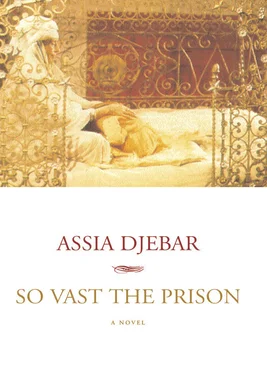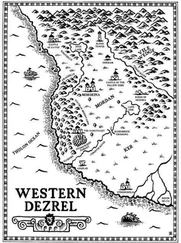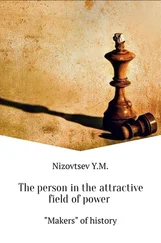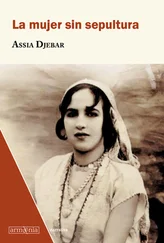Let us return to October 1837 and to our two friends, Sir Temple and Falbe, living in the captured city. Doctor Shaw’s English account in hand, they list the ancient monuments still in good repair twenty years earlier. Many have been demolished, but the underground cisterns are there; the fountain of Aïn el-Safsaf (“the poplar spring”) described by Leon the African at the beginning of the sixteenth century is still there, but without the hieroglyphic characters, no trace of which remains.
In the Casbah, an old Byzantine church is almost intact. As for the famous bridge, when one enters through Bab el-Kantara, it is visible with its two rows of vaults and the “remarkable structure,” about which Edrisi had already exclaimed. Our two tourists resume their calculations, locating various sites, then Sir Temple admires a statue of a woman with two elephants that Shaw had drawn. With two hands she lifts up to her belt the cape that she is wrapped in; the dress underneath fits closely. She is nodding her head — the features of her face are erased — to one side: her braided hair is down to her shoulders. At her feet there are little elephants that have lost their trunks.
The beautiful unknown woman in stone materializes: an immutable pagan idol, preserved because it was placed down low, set way down against the ravine. Although rage and death on the move spread out now above her head in these October days, the two foreigners, the Englishman and the Dane, have come only for the past. These men are only concerned with her, the unknown woman whose face has been eroded by the centuries, foreshadowing for them what if not destruction from now on?
THE DESTRUCTION OF Cirta’s freedom sounded the deathknell for Algerian independence, for any last bursts it made after 1830.
The bey Ahmed, who took the resistance off into the Aurès Mountains, becomes the head of an underground movement and will hold on for ten years more. To the west the emir Abd el-Kader continues to wage war; he will not be conquered until nine years later.
The year of Constantine’s fall, the son of Hamdane Khodja, an important dignitary from Algiers, is in Paris. His reaction to the news of the disaster is to write an account of a journey he made earlier with his father who had to cross Kabylia — still undefeated — to meet with the bey Ahmed. During the negotiations with the tribal chiefs that were necessary in order to gain anaia , that is, the host’s protection — the young Ali Effendi served as interpreter for his father in the Berber language.
Ali ben Hamdane Khodja had his text translated into French, and printed, by the orientalist de Saulcy. The latter had known Hamdane Khodja, who spoke English and French fluently as well as Arabic and Turkish and had correspondents in several capitals of Europe. Hamdane Khodja tried in vain, after the surrender of the dey of Algiers, to save what could be saved, but rapidly became the leader of a peaceful opposition — a position that was hardly tenable. He was attacked for his wealth; he was pushed to the limit.
He came to Paris, where he had plenty of friends who supported a French presence that would respect individual Algerian freedoms. He wrote a book, Le Miroir , in which he denounced the encroachments by French soldiers in Algiers, thus becoming the first essayist on the subject of this servitude now beginning.
In 1836 he throws in the towel. Leaving his son in Paris and escorted by sixty friends and relations, he takes the road to Constantinople, where the sultan provides him with a pension. There he hopes to use Ottoman power to sway the politics of the Maghreb, not abandoning Ahmed Bey to his own forces alone. He corresponds with the latter in the name of the sultan, writing in code.
After his defeat and the conquest of his city, Ahmed Bey, in a letter to the sultan demanded that cannons and four thousand soldiers be sent. Now here in Constantinople, faced with the unrest breaking out in the Tripolitaine, Ahmed Bey is expected to be named the pasha of Libya. But the Turkish powers go back and forth for a long time, despite the warnings of Hamdane Khodja: “The French,” he said, “are going to occupy Constantine; next they will infiltrate Tunis and Tripoli and carry their ambitions all the way into Egypt, I have no doubts. Tomorrow it will be too late!”
The statue of the Constantine woman prefigured another destruction for Lord Temple and Falbe — in such a rush were they to get to the ruins of Carthage, there was so much to do in this year of 1837!
Of course, ever since Napoleon’s expedition in Egypt, there had been treasure there, inexhaustible treasure, giving rise to trafficking, theft and irreparable loss: Ancient objects (including mummies and papyruses) are easily negotiable and enrich the intermediaries. Rivalries become intense among states and consular agents in Cairo.
The consul general of England in Tunis, Thomas Reade, the same man who welcomed Lord Temple and his friends in 1833, sees by Temple’s second trip that there is increased interest in Carthaginian archeology. Knowing the extent to which his colleagues from every nation are rivals in this lucrative commerce in Egypt, he goes for the bilingual stele at Dougga. He decides to take it and sell it to the British Museum. He counts on getting at least fifteen hundred pounds for it.
In 1842 he goes to Dougga and hires there a team of workers to pull down the monument and bring back the stele! He has probably obtained some authorization from an official of the bey’s government, it being a well-known fact that the bureaucracies of Muslim countries are more often than not indifferent to this remembering of antiquity … Reade has the entire façade bearing the engraved stele demolished, and the stele is sawed in two to make it easier to transport.
The local workers hired on the spot lack the technical means to detach this stele carefully. The other blocks of stone stacked on each other should have been pulled away to get to the block on which the inscription fit. They throw down the top blocks by lifting them with heavy levers. Thus the bilingual stele carried off to Tunis leaves a field full of ruins behind it!
A French visitor, Victor Guérin, who was there more than ten years later, described the scene: “In the jumbled heap I caught sight of the trunk of a statue of a winged woman (but with no head, arms or legs). On one of the remaining blocks a chariot pulled by four horses can be seen; the driver of it is mutilated, as is a second statue of a winged woman …”
Earlier an Englishman, Nathan Davis, had even more fiercely denounced “the shameless demolition” resulting from “the avarice of Europeans driven only by money matters.” He, too, described this mausoleum broken apart “barbarously,” and called his compatriot’s plundering a “crime.”
In a sad irony he reports that the consul indeed sold the stele to the British Museum, but not for the fifteen hundred pounds he had counted on — for a mere five pounds!
Time goes by and Tunisia is now a protectorate of French.
The field of ruins, Punic as well as Roman, becomes an area reserved for French archeologists. One of them, C. L. Poinsot, attempts to reconstruct the cenotaph of Dougga, making use of the sketches made in 1765 by J. Bruce in his travels.
Shortly after 1900 they begin the careful work of reconstructing the monument, making initial use of the stones still there, reconstituting the sculptures of the winged women, the quadriga, and the chariot driver. In 1910, with the exception of the bilingual inscription, which is still in London, the mausoleum is once again standing, almost intact, but stripped of its double writing.
Fifty years later C. L. Poinsot will devote himself to studying the papers of Count Borgia, forgotten in Leyden. Reconstituting a portion of the stele’s secret, he will prove that at Dougga there were, in fact, two steles, and that the second — probably the most important — of these had been partially erased.
Читать дальше












